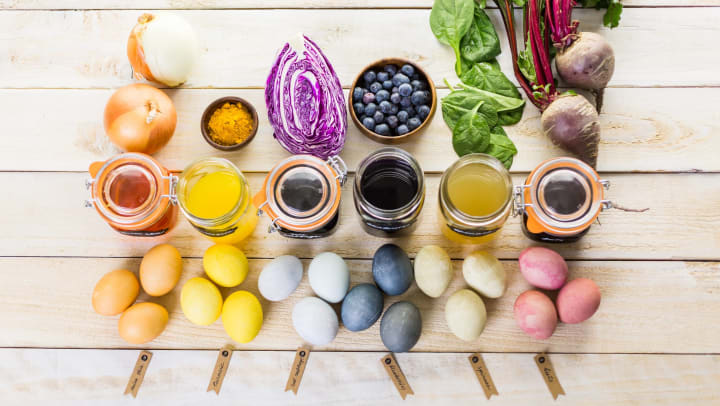As we continue to live in a world of social distancing, now is a great time to discover the art of tie-dyeing. Now, you’re probably thinking that this isn’t 1975, but we all know that tie-dye is making a serious comeback – and it isn’t just for making trippy tunics. Tablecloths, curtains, tote bags, and blankets are just some of the in-home items you can treat with tie-dye to get colorfully creative. Here’s how to make plant based tie-dye right at home.
Equipment
When it comes to creating plant based dyes, there’s a lot of nuance. No one person makes their dyes exactly the same. After all, if a vegetable is overly ripe it’ll produce a different color than a vegetable that isn’t, requiring you to adjust your dye mix. So we’re going to stick to the basics and provide you links (like this one to Martha Stewart's dye making instructions) with more detailed instructions. The one thing that is universal is basic equipment. Luckly, 90% of what you need is already in most kitchens:
- Cutting board
- Knife
- Cheesecloth
- Strainer
- Large bowl or measuring cup
- Salt
- Condiment bottles
- Funnel White
- T-shirt or fabric you’re choosing to dye
- Rubber bands
- Baking sheet
Ingredients
Once you’ve got all your equipment, it’s time to choose your colors – mother nature comes through in a big way here. Blueberries, onion skins, beets, cabbage, and many other vegetables can be used to create vibrant dyes. Check out Make 3 Organics for a more detailed list of options for dye ingredients.
Fabrics
Now, as tempting as just picking out any piece of fabric and preparing it for tie-dyeing, certain fabrics can’t hold the dye, especially 50/50 blends. For this, you’re going to want to have 90% to 100% natural fibers like, hemp, cotton, rayon, ect. Dharma Trading Co. has a detailed list of fabrics that work best for tie-dyeing.
And that’s it! With those basics you’re well on your way to adding some unique decor to your home in no time! For more great projects to do around the house be sure to check out our other blog posts.


